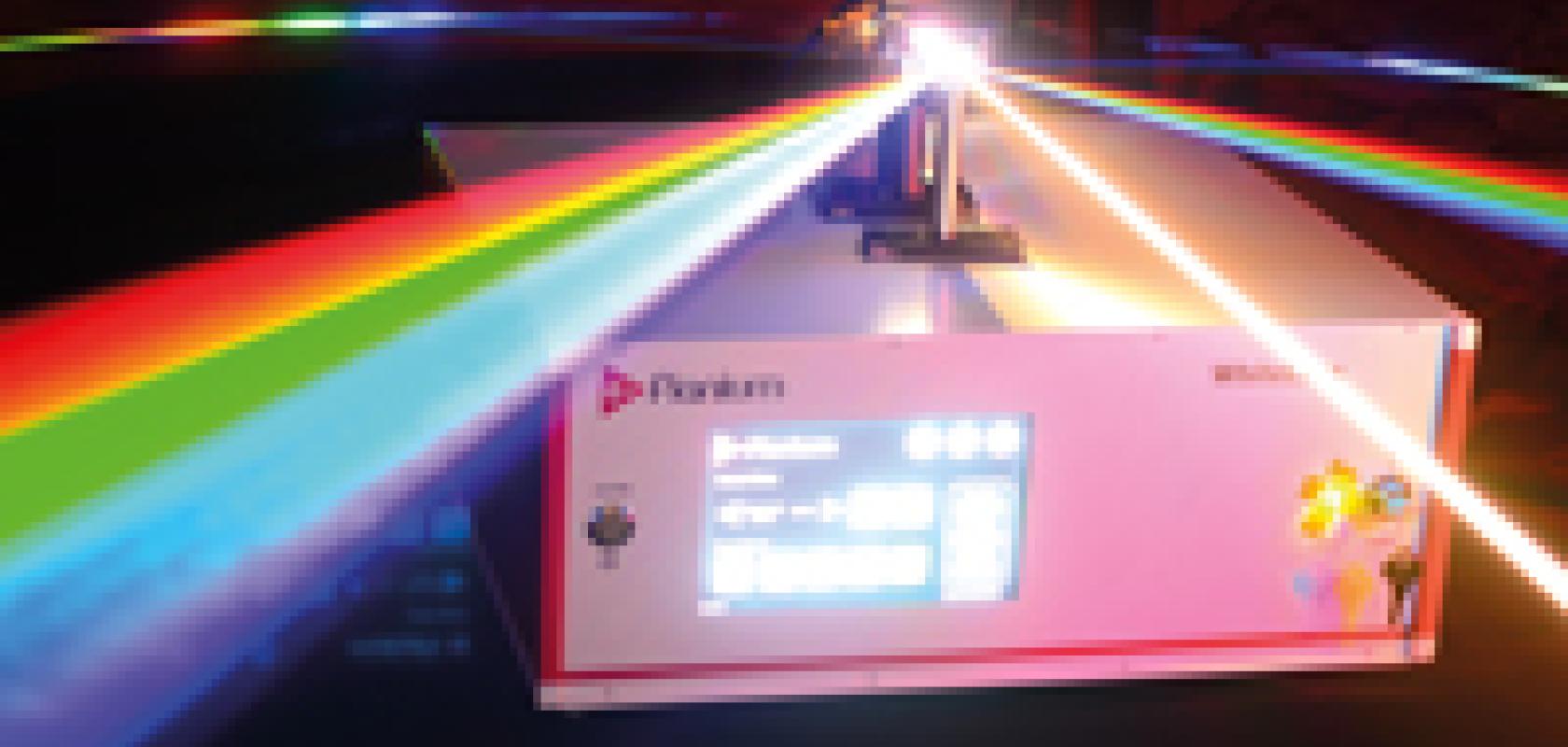Optical fibres are often associated with the telecoms industry, but the technology has migrated through into many different application sectors.
Biomedical, manufacturing and microscopy are just some of the applications benefiting from optical fibres. These newer application areas have a lot to thank the telecoms industry for, as Professor David Richardson, deputy director at the Optoelectronics Research Centre at the University of Southampton, explained: ‘The telecoms industry has paid for the development of some very high performance components and has driven the development of the pump diodes and fibre amplifiers. It has really developed the technology.’
It is not just the components that have crossed over from the telecoms industry, but the processes have as well. Thomas Alkeskjold, group manager of fibre technology at NKT Photonics, said: ‘The manufacturing technologies have been developed and perfected to provide ultra-reliable and high performance components for the strict requirements of telecoms. This could be glass preform manufacturing techniques, including doping technology and fibre draw technology, as well as fibre coating technology.’
A notable development to emerge from the telecoms industry is the high power fibre laser. Fifteen years ago, the manufacturing processes and components developed in the telecoms sector were adapted to develop first generation high power fibre lasers. And, when the telecoms crash hit in 2002, the focus of optical fibre research shifted to the high power fibre laser arena.
The continued use and development of optical fibres has only been achieved by researchers striving to overcome many of the limitations imposed by the fibre architecture.
A conventional optical fibre guides light within its core, which is a region of doped glass with a higher refractive index than the surrounding material, causing internal reflection.
More novel fibre designs are now being used. Photonic crystal fibres (PCFs), also known as microstructured optical fibres, do not guide light using that mechanism. These fibres are usually made of a single material and the light guidance is achieved through very fine microstructuring of glass struts and nodes within the cross section of the fibre. The core can either be designed as a hole surrounded by a fine microstructured cladding, or it can be a solid region of glass with a microstructure around it to lower the refractive index in the cladding of the fibre.
Alkesjold told Electro Optics that the technology ‘offers unique opportunities for complex waveguide engineering, creating fibres with properties that cannot be produced with standard fibre technology.’
The hollow core fibres guide light in air rather than in glass. Richardson added: ‘This has a number of profound effects. Firstly, the signals travel through the hollow fibre around 30 per cent faster than a conventional fibre. If you are interested in getting information from A to B as quickly as possible then the hollow fibres are perfect for that application.
‘Secondly, if you turn the power up into a solid fibre then at a certain power level you start to see non-linear effects, which can distort your signal,’ Richardson continued. ‘If you have a hollow core fibre then there is a low linearity and the fibres can actually transmit light at much higher power levels before signals become effected.
‘A third feature is that if you fill the holes with a gas, then you can have a very strong light-matter interaction because the light and the gas are confined in the same physical region of space and therefore you get a very strong interaction – so this is particularly useful for sensors,’ Richardson added.
Another feature of the hollow core fibres is their resistance to radiation. When a solid core fibre is exposed to radiation, then the glass becomes opaque as the radiation levels increase but, in a hollow fibre, there is no glass so they are more resistant to radiation. This, for example, makes hollow fibres suitable for many medical applications where high radiation levels may need to be focused on an exact and tiny area, for example when targeting a tumour.
The advances made in optical fibres have played a significant role in enabling the development of high power fibre lasers, one of the most popular modern laser technologies. A high power fibre laser uses the same scientific principles as any other solid state laser, but an optical fibre is used as the laser’s gain medium. High power fibre lasers are now associated with high average powers and very high beam qualities – both of these characteristics are required by many industrial, defence and scientific applications.
Fibre lasers have been developed primarily for use in industrial materials processing, such as marking and cutting. This is as a result of a number of characteristics, as Richardson told Electro Optics: ‘Lasers can be very compact and monolithic as well as achieving high efficiencies. They do not require cooling and, importantly, they work in a wide range of modes of operation. They can provide high levels of power of around 10kW, which is sufficient to cut through steel or concrete making them capable of very heavy duty industrial processing.’
At the opposite end of the spectrum, the short pulse fibre laser is the perfect candidate for microprocessing applications, such as the manufacture of delicate electronics and transparent materials. Ross Hodder, head of sales and marketing at fibre laser company Fianium, said: ‘Short pulse lasers produce smaller and more precise features than conventional laser processing techniques due to reduced heat-related effects. A picosecond laser will, for example, leave clean marks without effects such as melting, recasting and debris being left on the surface.’
Pico and femtosecond fibre lasers are also suited to a variety of laser microprocessing applications involving transparent materials such as glass, crystals and polymers. Hodder added: ‘The ultra-high peak power of picosecond lasers allows for visible and IR lasers to work in a space conventionally reserved for UV lasers. By avoiding UV wavelengths the tool’s lifetime is extended, and other applications involving bulk and 3D material modification are available that would not be possible with UV lasers.’
Biomedical applications
The scope for fibre optics within the biomedical industry is vast and well established. One emerging technology is the adoption of supercontinuum lasers, which are suited to applications such as fluorescence imaging, total internal reflection fluorescence (TIRF) microscopy and single molecule imaging.
Supercontinuum light can be described as ‘broad as a lamp, bright as laser’. The fibre laser’s beam is broadened to a wavelength range of below 400nm and extending beyond 2,500nm and allows for easy beam steering, collimation and focusing.
Supercontinuum fibre lasers are also being adopted for medical and microscopy applications to replace conventional lamps and lasers because they offer an operating life of tens of years, as opposed to hundreds of hours. ‘This cuts down on the cost of servicing the broken light component, as well as the additional costs associated with buying spares and downtime,’ Hodder added.
Supercontinuum fibre lasers could go on to produce ‘dramatic and transformative’ change in the wider fibre laser world, according to Hodder, as they move out of the confines of laboratories and R&D centres and into more industrial applications within the OEM market. Hodder added: ‘This is not a pipe dream; it is a real product development effort that we think will soon pay off.’
There are always improvements to be addressed as the market adapts the photonic crystal fibre technology, as Alkeskjold added: ‘[We need to] make them cheaper and easier to manufacture, build in functionalities in the fibre to simplify the architecture of the lasers, continuously increase the design flexibility to provide spot-on specifications for a variety of applications, and continuously improve the lifetime so we keep providing the low cost-of-ownership platform that fibre technology is renowned for.’
Fibre innovations
One interesting research area to increase the flexibility and reliability of fibre technology is space division multiplexing where, instead of using a hollow core or a single core, the optical fibre contains multiple cores.
With a conventional optical fibre, one spatial mode is supported and one optical core so, in principle, only one optical signal can be transmitted from A to B. But an optical fibre with N modes or N cores would increase the amount of information that can fit down a fibre by N-fold.
Richardson said: ‘We are looking at making N as big as possible and getting lots of information through the same fibre, which is potentially a cheaper alternative to using multiple fibres.’
The development of space division multiplexing has made optical fibre research go full circle, as Richardson explained: ‘With this new generation of space division multiplexing we’re actually now taking some of the technology that was developed for high power lasers back into telecoms. It’s payback time.’
As the telecoms industry begins to reap what was sowed so many years ago, the optical fibre application arena will continue to grow with oil exploration and environmental sensing applications on the horizon for optical fibre sensors.
However, there are limits to the application areas for optical fibres as Richardson said: ‘In terms of the commercial limits, it’s the practicality of the technology, reliability of making the fibres to a good spec and ultimately cost in terms of what a particular application can bear.’
But the technology, as a whole, will eventually become ubiquitous as these limitations are quashed, as Richardson added: ‘Fibre optics are used everywhere. I see more and more of it going into applications where people are not aware the technology is even there.’


